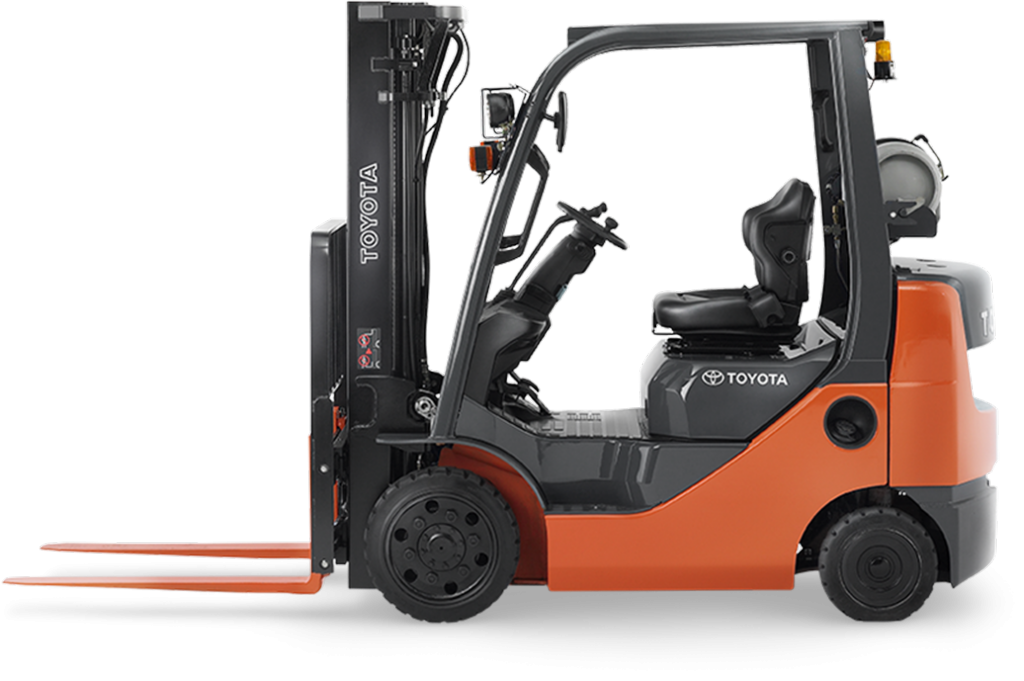Cushion Tire ForkliftReading time: 03 min 30 sec. Table of Contents1. Summary2. What is a cushion tire forklift? 3. Features of Cushion tire forklift 4. Advantages of Cushion tire forklifts 5. Disadvantages of Cushion tire forklifts 6. Why choose Lift Parts Warehouse to buy Forklift Parts? 7. Takeaways SummaryThe cushion tire forklift gained rapid popularity in the late 1990s due to its quietness, even though it had only one-third the life cycle of an upright truck. Today cushion tire or driveshaft-designed trucks can last as long as their solid rubber counterparts. What is a Cushion tire forklift?
A cushion tire forklift is a type of forklift that uses inflatable tires instead of solid rubber tires. Cushion tire forklifts are much quieter than the conventional upright style forklifts (called 'straddle' or 'chassis' trucks), and they do not require any compressed air for operation.  Features of Cushion tire forkliftThe cushioning effect provided by the pneumatic tires gives them good traction, but this also causes cushion tire forklifts to be slower and less powerful than conventional chassis trucks. Cushion tire forklift capacity ranges from 0.75 to 2 tons, with their speeds being around 30% lower at throughputs of 4500kg compared with upright trucks. This speed reduction is significant because the cushion tires cannot rotate as fast as solid rubber tires without damaging them or causing them to lock up. Furthermore, cushion truck braking systems are inherently limited because cushion tires cannot dissipate heat, and solid rubber tires can, therefore resulting in longer stopping distances for cushion tire forklifts. Advantages of Cushion tire forkliftsThe cushion tire's slowness does have some advantages over solid rubber tires; however, cushion tires take a much longer time before they need to be inspected for wear, cushion tires are less affected by cold weather, cushion tires are said to be more stable in rough ground conditions. Cushion trucks have lower fuel costs because cushion tires benefit from improved access to the road surface. Cushion tires also help cushion truck operators be safer when operating on softer floor surfaces such as gravel or grass where conventional chassis trucks would sink into. Cushion tire forklifts can run on full air pressure without wearing out their cushion tires, unlike solid rubber tires, which means that cushion trucks usually get about 5% better economy than their solid rubber counterparts. Their affordability is another advantage; cushion tire forklifts cost around 15-20% more than an equivalent capacity straddle truck (Cummins cushion truck). Some cushion tire forklifts even can be operated on trolley wheels or tracks (cushion tire trolley trucks) to increase their versatility. Today cushion tires are commonplace in factories and warehouses worldwide, often favored by warehouse managers for their quietness and smooth ride. Disadvantages of Cushion tire forklifts
Although cushion tires come with some disadvantages, they offset these by being more suitable than solid rubber tires for various applications such as hauling recycling materials and moving hefty loads inside a factory where cushion tires' lower noise level will not disturb employees. Why choose Lift Parts Warehouse to buy Forklift Parts?So if you're looking for excellent service combined with competitive pricing on forklift parts, Lift Parts Warehouse is the way to go because Lift Parts Warehouse values your business greatly! Takeaways
|

First Order Special
GET 5% OFF
On Your First Purchase!
Use this discount code
GET5%OFF

